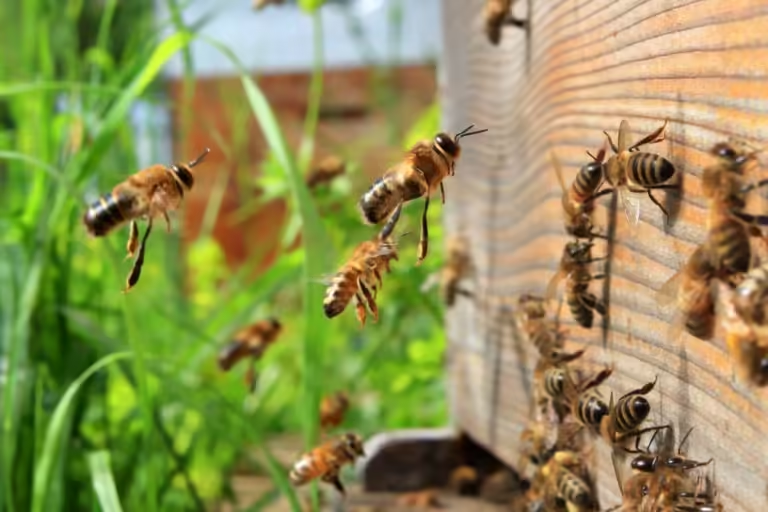
Foraging bees carry pollen from surrounding plants back to the hive
Eric Tourneret
If you’re lucky enough to find one, dip your fingers into a jar of honey from Pitcairn Island, a remote British Overseas Territory in the South Pacific. Honey is the island’s main export and highly prized among foodies. Pure and free of pesticides and pollutants, the honey infuses the delicious subtropical scents of Pitcairn Island plants, including passionflower, mango, guava and rose apple.
Honey contains much more information, if only we knew how to look for it. Breaking a container of honey opens a gateway to an entire ecosystem. Honey contains a detailed record of everything the bee encountered while foraging – not just the flowers that provided it with nectar and pollen, but also other plants, insects, fungi, viruses and larger animals in the environment.
Honeybees are “passive bioaccumulators,” explains Parwinder Kaur of the University of Western Australia in Perth. As they go about their business, they unconsciously collect samples of whatever they come into contact with with their bushy bodies, which then mix into the honey. “It’s got everything in it,” says Luca Fontanesi of the University of Bologna in Italy. “It’s pretty much everything.”
Scientists are now realizing that they have the potential to reach into that honey pot and obtain sweet morsels of information that are currently hard to come by. Using advanced DNA tools, researchers are using honey to gather data on bee health, the general state of biodiversity in the bees’ foraging areas, and diseases in the broader environment. They could identify possible culprits behind the mysterious Colony Collapse Disorder that is wiping out beehives, and…

